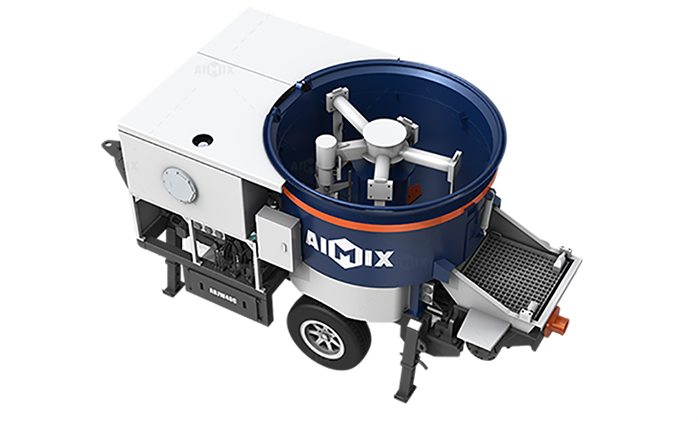The construction industry’s relentless pursuit of efficiency often encounters a significant impediment: the operational schism between mixing and placing concrete. This bifurcated process necessitates multiple pieces of equipment, creates logistical labyrinths on site, and introduces deleterious pauses that compromise material integrity. A paradigm shift is emerging, challenging this antiquated methodology. The pan type concrete pump mixer represents not merely an incremental improvement but a fundamental reengineering of concrete production and placement. This integrated apparatus promises to consolidate workflows, but a critical examination is warranted to separate genuine innovation from mere mechanical amalgamation.
Deconstructing the Integrated Apparatus
The pan mixer pump’s nomenclature reveals its core premise: the fusion of a forced-action pan mixer with a high-pressure hydraulic pumping system into a singular, monolithic unit. This is not a simple juxtaposition of two machines. The design necessitates a sophisticated synergy, where the mixer’s discharge rhythm is seamlessly synchronized with the pump’s material intake requirements. This eliminates the transfer lag inherent in traditional setups, where concrete must be moved from a stationary mixer to a separate pump, a process that invites material segregation and early stiffening.

The Mechanics of Cohesive Output
At the heart of this apparatus lies the forced-action pan mixer, renowned for its vigorous blending of even the most recalcitrant, low-slump mixes. Twin overlapping stars, rotating in a counter-current fashion within a stationary pan, ensure a homogeneous amalgamation of aggregates, cement, and water. This mixture is then fed directly into the pumping chamber through a precisely engineered gate system. The small concrete pump itself is typically a dual-cylinder hydraulic type, designed to handle the dense, abrasive mix with minimal wear and consistent pressure. The entire sequence is a closed-loop system, dramatically reducing exposure to the elements and the potential for premature hydration.
Operational Efficacy and Economic Scrutiny
The purported benefits of this consolidation are compelling, yet they demand rigorous scrutiny. The most salient advantage is the obviation of a separate batching plant and the attendant transit mixers. This translates to a radically reduced physical footprint on the construction site, a particular boon for congested urban projects or renovations with severely limited access. The potential for labor reduction is also significant, as a single integrated unit requires fewer operators than managing discrete mixing and pumping operations.

A Critical Look at Throughput and Versatility
However, this consolidation introduces its own set of constraints. The continuous production model, while excellent for sustained pours, lacks the volumetric flexibility of a concrete batching plant that can service multiple pumps or pour sites simultaneously. Projects requiring intermittent, small-batch placements may find the system’s economics less favorable. Furthermore, the capital outlay for this specialized, integrated machinery is substantial. Its justification hinges on a high utilization rate across suitable projects; otherwise, it risks becoming an expensive, underused asset compared to the flexibility of separate, more commonly available equipment.
Assessing the Impact on Material Integrity and Project Flow
From a qualitative standpoint, the pan mixer pump’s closed-system operation offers a definitive advantage for mix integrity. The immediate transfer from mixer to pump line minimizes the potential for water evaporation, aggregate separation, and the incorporation of ambient debris. This results in a more consistent, higher-quality concrete placement with improved compressive strengths and surface finishes. The elimination of transfer points also enhances site safety and housekeeping, reducing trip hazards and spillage.
https://youtu.be/q5HFuJ6Usq0?si=0j126j9HHQ7D2rVn
Reevaluating the Project Workflow
The technology fundamentally recalibrates the project timeline. The delay between mixing and placement is virtually eradicated, allowing for a more predictable and accelerated pour schedule. This can compress critical path activities and lead to earlier project completion. Yet, this very efficiency creates a new vulnerability: any mechanical failure in the single unit halts both production and placement entirely, a risk that is somewhat mitigated in a decoupled system where a backup mixer or pump can be mobilized. The pan mixer type concrete pump machine is not a panacea, but a powerful tool whose application must be critically evaluated against specific project parameters and potential operational fragilities.